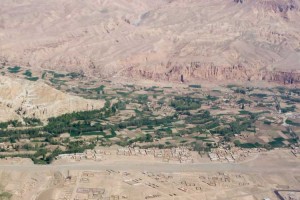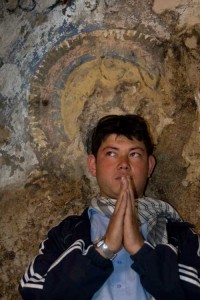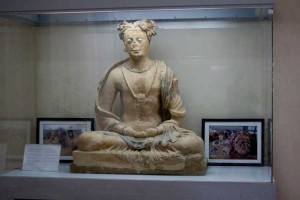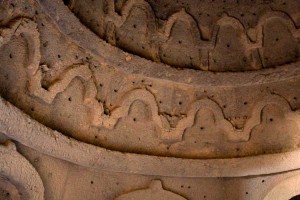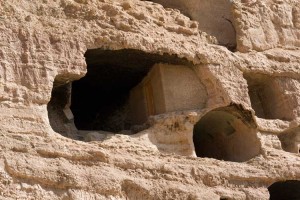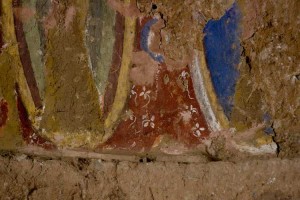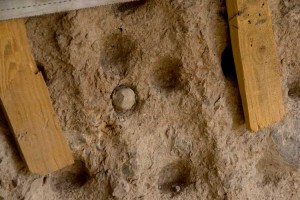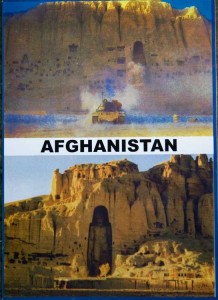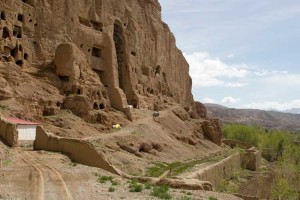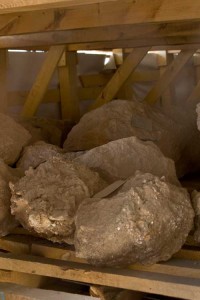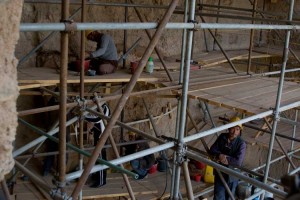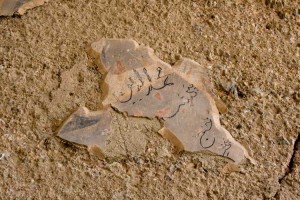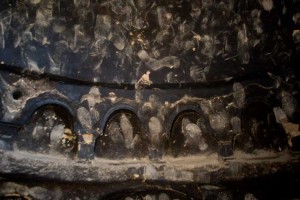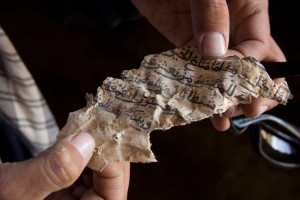Archive for June, 2010
Comments on the Peace Jerga
Thursday, June 10th, 2010
(This commentary was written by Mahbouba Seraj, Women’s Programming Manager. Peggy’s commentary is at the end.)
Afghanistan’s Peace Jirga is all over (at least for now) the world’s news. Media is full of commentaries and criticism about the jirga, women’s participation, what should have happened and what should not have happened. I know for some it was very disappointing and very negative. But to me, as a 62-year old Afghan woman, it was a very different perspective. I have seen and been a part of women’s struggle in this country from the day when women were told not to wear their chadaris until the moment when women were selected as Cabinet members; from when women were enrolling in universities to when women were becoming doctors, engineers, etc.
This jirga was not a failure. It was not a complete success but it was definitely not a failure. I would hate to believe (or if the world believes, I would like to correct) that the Afghan women who are a part of the Afghan Women’s Network (AWN) [AWN held a “pre-jerga” for women which I attended, to talk about women’s participation] had nothing to do with the number of women participants in the jirga and that if it wasn’t for Secretary of State Mrs. Clinton, women’s participation would not have happened. I am not saying that Mrs. Clinton’s suggestion didn’t have any effect because I am sure it did and on behalf of all of us, I thank her. However all of us in this city worked too hard to be disregarded like this!
Comments suggesting that women’s participation was primarily the result of Mrs. Clinton, do not help the Afghan women, or their unity, or their cause….. Don’t forget that this is Afghanistan. We are the same sisters, mothers, wives and daughters who were looked upon in the first jirga as lepers. Then, we were not acknowledged, looked at, listened to, let alone talked to. Let’s not compare Afghanistan with the rest of the world but rather to Afghanistan of 10 years, 8 years or 7 years ago.
Our battles and struggles are still ahead of all of us; we need to do a lot of work; unifying our sisters should be our number one priority. I saw things from our so-called sisters who were against each other that were unbelievable. We need to learn to support each other first. We have a lot of work ahead of us. This peace jirga was really what the people of Afghanistan want. And they don’t want to fight anymore. They don’t want to die in the hands of the national army, international militaries, the Taliban, Al Qaeda, or each other. They want to live.
Of course there was a lot that was not accomplished…. That is because we women are not united. We all think “I know better; what does she know?; who does she think she is?”. Let’s take it one step at a time .. hopefully forward!
*********************************************************************************************************
Peggy’s commentary:
This last was an ugly phenomenon that I saw and also heard about—how Afghan women are often putting each other down, refusing to participate if “she” was going to be involved, etc. If women could unite their efforts, or at least not denigrate the efforts of others, change for women would happen much more quickly. Like with the ethnic antagonisms, I see hope for change with the young people who identify as Afghans first rather than their ethnic identity and with young women who see the female rivalry as a barrier to the progress for women that they want to see.
The other issue is about the rapidity of the changes we want to see. Of course we want all women worldwide to have the freedom and an economic situation that can help us reach our full potential as human beings. But I have seen in Afghanistan and other places, how well thought out, carefully strategized, person to person, comprehensively based efforts (which of course all take time) toward this goal can have a deeper and longer lasting effect as it engages the wider society. One needs to look at Afghanistan with a long term view.
Posted in Other | Comments Off on Comments on the Peace Jerga
Bamiyan Part 2
Friday, June 4th, 2010
[Sorry to take so long to get this post up. Now I’m back in Austin and beginning to go through my interviews and photos. It’s a mountainous task! I will continue to write as I go through this process.]
Bamiyan means “shining place”. It’s holy for Zorastrians as well as Buddhists.
The cliff with the “Buddha caves” dominates the landscape of Bamiyan City. It runs along the ancient Silk Road between the the Hindu Kush and the “Baba Mountains”.
Abbas, a well-versed guide from the Agha Khan Foundation cultural Center, showed me around.
Bamiyan was chosen by the Hephthalites as the place to settle because of the mountain barriers and strategic defense points overlooking the valley, it’s location along the Silk Road and the conglomerate cliffs that could be easily carved into housing.
The worst war (of the Soviet, civil and Taliban) was the one with the Taliban. There wasn’t so much fighting during the “Russian times”. The Soviet army perched on the few high places and easily controlled the area but mostly, people were allowed to live their lives. The Taliban period was quite bloody, however, as here the conflict included racial animosity (Hazara vs. Pashtun) as well as a fight between the Sunni Taliban and the (to them) heretical Shia. Hazara fighters holed up in the caves, which had inner passages from one to the other. 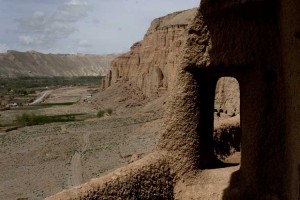 In some areas, water was also channeled inside. During and after the wars, 3000 or so families were living in the caves which kept them cool in the summer and relatively warm in the 6 months of harsh winter.
In some areas, water was also channeled inside. During and after the wars, 3000 or so families were living in the caves which kept them cool in the summer and relatively warm in the 6 months of harsh winter.
I was surprised to find that all of the 12,000 caves in the Bamiyan area are man made, the ones along the “Buddha cliff” hand dug at first by the Buddhist monks, and later by regular people to make their houses. Buddhists begain moving into the area in the second century and by the 5th century, 2,000 monks resided there
It took a full century to carve the Buddhas. The large one was covered with gold and diamonds and both were painted. They found heads of small Buddhas and small stupas below the wall with the Buddhas.
This excavation progresses in June and July when Professor Tarzai is free from his teaching duties. When he’s not there, the site is lined with plastic and filled in with dirt. 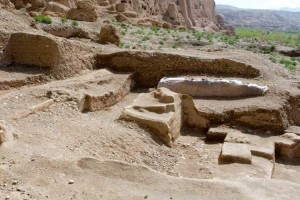
In Greece and Rome they found copies of a map of Bamiyan. It mixes Greek, Indian, Byzantine, Iranian Sasanid and Chinese architecture. It was made at the same time, using the different styles.
In this place with doors locked by UNESCO, the paintings are even better. The blue color was made of ground up lapis lazuli stones. The green was colored by a tree, yellow from herbs, and poppies made the red. These colors were mixed with either walnut or poppy seed oil. These date from the 5th to the 9th centuries, before oil painting was done in Europe.
Most of the Buddhas statues were just carved out of the soft stone cliff, but parts of them were modeled using a plaster of mud mixed with straw. The arms, which were also added, were secured in place with these
pock marks” which allowed the mud-glue and wooden pegs to adhere to the sides of the grotto.
The Taliban had a hard time destroying the Buddhas. First they shot at it, and when that didn’t work, they used dynamite. They blew charges three times a day. It took 1 week to destroy the small Buddha which was made of softer material and it took a month to destroy the large one.
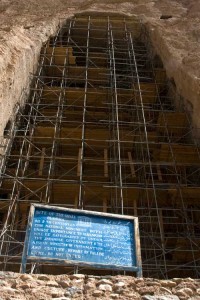
Once the Buddhas had been blown up, a lot of the rubble has now returned to dirt.
The plans are to do a partly fragmented reconstruction.
Here they are stabilizing the rocks. In this phase of the reconstruction, they are painting the rocks with chemicals to help solidify them.
In addition to destroying the Buddhas, the Mujahadin and Taliban also added their graffiti to the paintings
and had fun in the kitchen putting footprints on the ceiling.
As we were walking through the caves, Abbas found this crumpled handwritten piece of the Koran stuffed in a crack in the wall. We stopped at the tourism dept. on the way out to turn it in. They don’t know the exact date yet, but it may be several hundred years old.
Posted in Afghan Women's Project, archeology, environment, Other, tourism | Comments Off on Bamiyan Part 2
